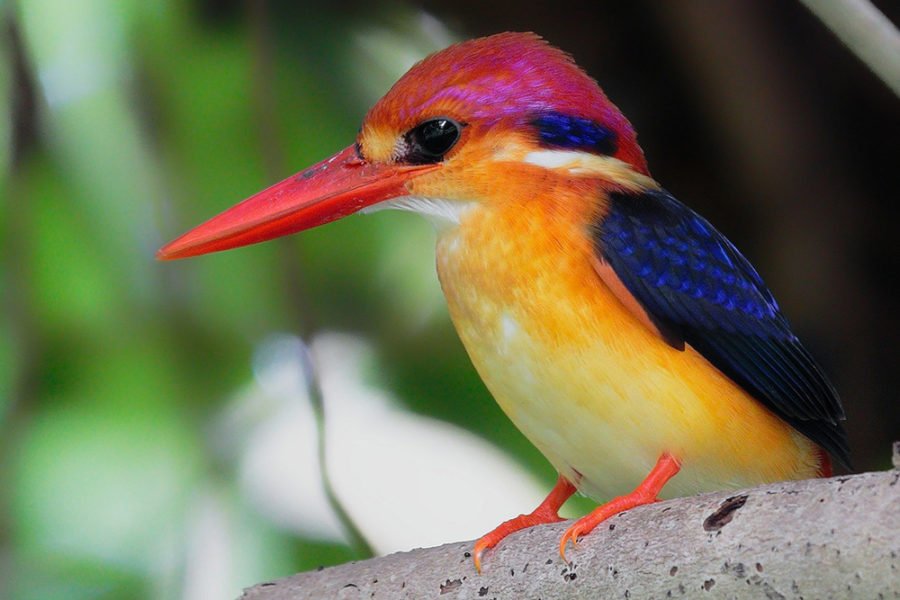Oriental dwarf kingfisher, a rainbow by any other name

Bec Crew
Bec Crew

BRIGHT AND BEAUTIFUL, with a lovely red beak for killing, the oriental dwarf kingfisher (Ceyx erithaca) is a pocket-sized predator.
Found all over Southeast Asia where the rainforests are dense and shady, this 13cm-long creature hunts by small streams and ponds to maintain its rich diet of geckos, crabs, snails, frogs, and spiders. It captures its meals by hovering or perching above the water, and once it spots its prey, dives deep into the water at speeds of over 40km/h.
A major challenge in taking its chase from the air to the water is mitigating the dramatic change in light refraction, which creates a lot of glare. To combat this, each of the kingfisher’s eyes contain two foveae – a structure that’s particularly dense in light-collecting photoreceptors – and the kingfisher can switch from one to the other as it transitions into the water.
A number of birds that need superb judgment of distance and speed, such as hawks, owls, eagles, parrots and hummingbirds, have two foveae per eye. We lowly humans only have one.
Oriental dwarf kingfisher a separate species?
The stunning colours of the oriental dwarf kingfisher have inspired as much curiosity as they do wonder. The species boasts two very different colour combinations – the black form, which gives them their other common name, the black-backed kingfisher; and the rufous form, resplendent in an overall pinkish-coral hue.
The two forms are so physically different, there’s still a debate over whether the rufous form should be its own species (Ceyx rufidorsa), or a subspecies of the oriental dwarf kingfisher.
In 2010, biologist Haw Chuan Lim from the National Museum of Natural History in Washington, led a study that placed the rufous form in Sumatra, Malaysia, Borneo and Java, and the black-backed form to the north of these regions. He suggested that the two forms are far enough away to have developed the two colour forms, but they maintain their genetic similarities by occasionally crossing paths.
This region-specific colouring is quote rare among birds, and the oriental and rufous dwarf kingfishers certainly wear it well.

